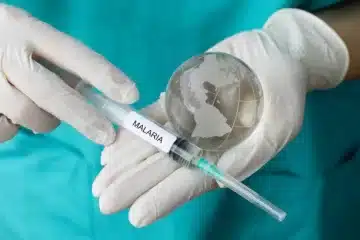The muscle inside the back of the knee, called the popliteus, is an acute muscle that participates a huge role in supporting our knees movement. In case you are observing pain in back of knee when straightening leg, there are numerous causes that can be responsible, which includes various problems affecting the popliteus muscle. According to pain management in Dallas, knee pain is an extremely common issue. It is so usual, in reality, that knee ache is the source for almost 4 million primary care cases every year, as stated by American institute of Family Medical Doctor magazine. Explaining that they not only affect and assist our body weight, but also help us to walk, stand, and carry out most of our routine sports, it’s now not surprising that we put plenty of stress on our knees. However experiencing knee aches can be sufficient to maintain us in our tracks.
Causes and Treatment of Pain in Back of Knee
Here are given causes and treatment of pain in back of knee when straightening leg:
-
Baker’s (Popliteal) Cyst
A Baker’s cyst (additionally known as a popliteal cyst) is developed from fluid in the back of the knee. Such cysts are repeatedly due to some other issues, such as a meniscus tear or arthritis. You’ll possibly note a tightness or fullness inside the middle of the back of the knee felt more severely while the knee is bent. In less common cases, the cyst may additionally break(pop) and liquid will move down the backside of the knee.
Other symptoms include:
- Fullness at the backside of the knee
- A clear lump behind the knee
- Knee stiffness
- Calf ache and inflammation(ruptured cyst)
Treatment and urgency: Treatment for Baker’s cysts by a pain doctor in Hillsboro consists of ice, rest, maintaining your knee high, and NSAIDs. The body regularly absorbs the liquid, causing the cyst to reduce. The cysts might be relieved or cortisone injectables can be suggested to facilitate them. Baker’s cysts might additionally reoccur if the underlying reason isn’t handled.
-
Hamstring Tendonitis
Your hamstrings involve a group of muscle mass at the backside of your thigh that supports bending your knee. Tendons connect the hamstrings to your knee and pelvis. Those tendons occur to be swollen with activities that demand repetitive knee bending or might also get damaged at some incidence of sports. The tendons might also turn out to be stiff if you experience knee arthritis.
The swollen or tight hamstrings can protect you from absolute straightening the knee while can pull on the knee, leading to pain. Discomfort may be severe and is frequently located radiating towards the outer side of the knee, a point where hamstring tendons gather. The location can be sore while touching or painful when you move your knee to straighten up
Rare: Hamstring tendonitis might be more general in individuals who observe knee arthritis.
Other signs and symptoms
- Muscle sprains
- Tough full straightening the knee
- A push sensation at the backside of the knee
- Discomfort with knee bending
Treatment: It is usually managed with rest, and ignoring certain movements. Physiotherapy might also be helpful.
-
Calf Strain
The calf muscle mass radiates at the backside of your lower leg. A calf stress can show up while doing an exercise that has you pulling off or going from a running to standing position fast. Pain can occur unexpectedly and may be severe the next day. In a few cases, the calf mass may emerge as partly torn, causing inflammation and bruising.
Other symptoms include:
-
- Inflammation or bruising of the calf tissue
- Pain when targettin the toes downward
- Discomfort when pulling off with the feet
- Treatment: Calf stress is usually managed with rest, modifying your activities, applying ice and heat, administering NSAIDs such as ibuprofen and following exercises. If signs don’t enhance after several days, physical therapy can be recommended.
-
Meniscus Tear
The meniscus involves a ring of cartilage that is present between the area of 2 leg bones making up your joints of knee —the tibia and femur. All knees have a meniscus at the interior (lower back of the knee) and outer area(anterior) of the knee. The most general location for a meniscus tear is at the back of the knee. The meniscus might also tear while twisting damage or tear and wear. Meniscus tears frequently lead to a pointy stabbing pain within the knee.
Common: Almost 12-14% of individuals have experienced a meniscus tear. Deteriorative meniscus tears mostly occur in males aged 40–60.
Other symptoms include:
- Inflammation in the knee
- Locking, Catching,, or activating of the leg
- Targeting of the knee with activities
Treatment: Management starts with icing, rest, and using NSAIDs. Physical exercises may also facilitate recovery. If there is locked knee in a bent posture(known as a locked bucket handle tear) or if signs don’t enhance after doing such treatments, surgical procedures may be recommended.



















